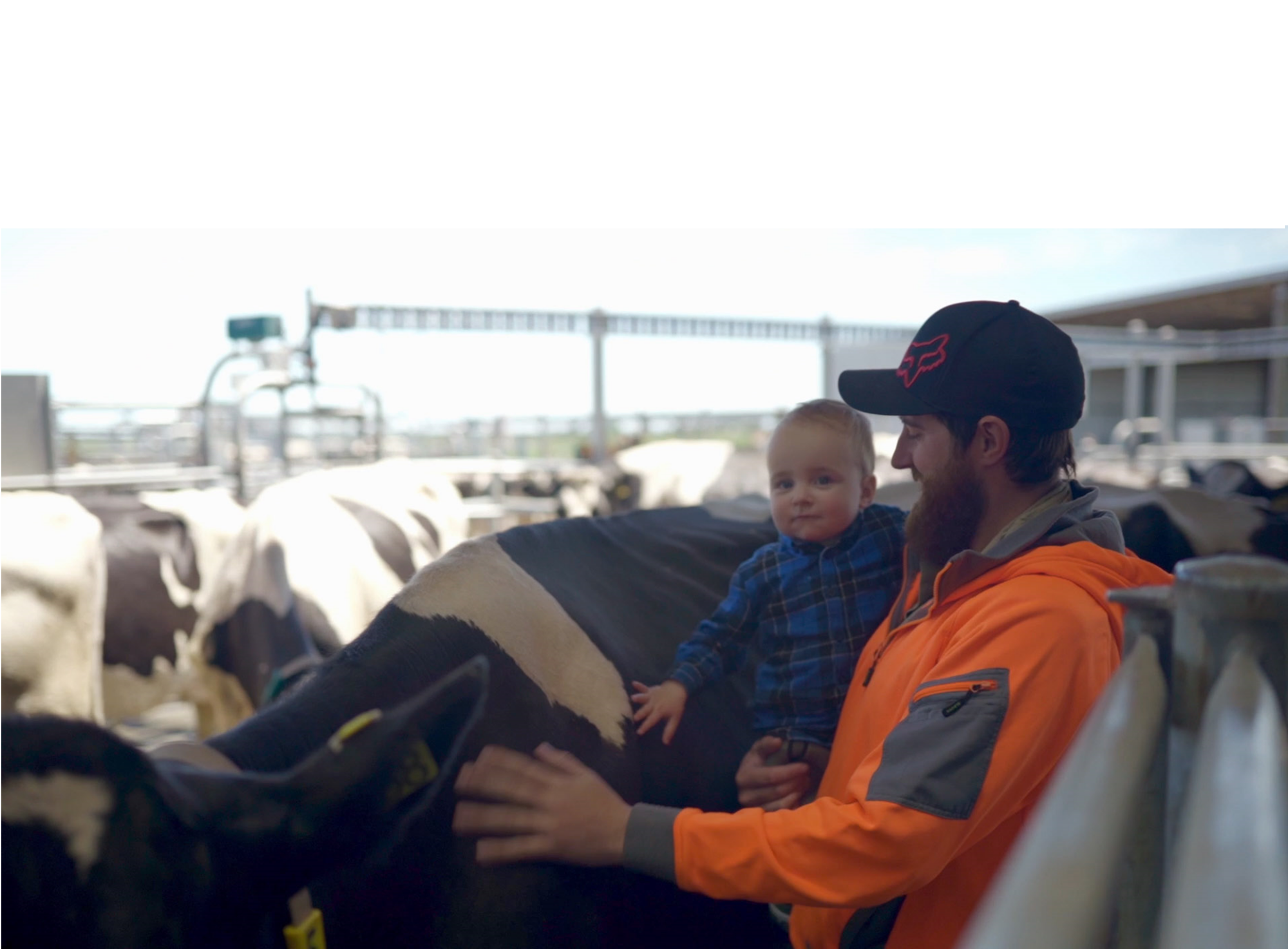
Evan and Sheriden Williams
Owners
Yannathan, Australia
GEA CowScout – Powered by Nedap technology
Keeping a close eye on the herd can be challenging on the vast pastures of Australia. It takes a long time to observe three hundred cows in a grazing system. On the Williams-Lowndes farm, new technology has taken them to a different way of dairy farming. Which leaves them much more time to spend with their families.

“Here in Victoria, Australia, we run a family-based dairy farm”, owner Evan Williams tells. Together with his wife Sheriden, their daughter Georgie and her husband Graeme Lowndes, they have got just under three hundred Friesian-Holstein cows in a pasture-based grazing system. “We’ve got about two hundred hectares to support that operation”, Evan shows slightly proud.
When they moved to this location in 2001 they had an old rotary milking parlor. Now they have replaced that with a robotic GEA system which led them to the GEA CowScout technology. “Before we had our CowScout system”, Sheriden explains, “we used to have tail paint or set out beacons. That was always a big job. We probably went out in the paddock three or four times a day and watch the cows as well. So that took up a lot of time, really.” And that method was not 100% watertight either. “If a cow has rubbed herself on a tree, and removed some of the paint, we would be second-guessing. Is she bulling or not?”
With the GEA CowScout technology the cows wear CowScout tags. These CowScout tags track the position of the cow, measure her steps, movements, eating behavior and rumination. Evan shows how the data is presented: “It’s on our phones and on our PCs. So it just made our farm get a lot closer to us and we can keep track of the health of our cows.”

Sheriden is very content with the possibilities this system offers: “This system tells us everything we need to know. It’s all there and you can see how strong her heat was. It’s really, really good in that way. I’m actually looking forward to the results that we will get for the last three months we’ve been using this. Because we’ve really been watching very well when to inseminate, making sure it’s the right time. So I actually think our in-calf rates will be pretty good, when we do the pregnancy tests.”
With the introduction of the automated system, the daily working routine changed on the farm. Graeme explains the difference: “Basically we used to check the cows as they would come on the platform. If we saw cows that would normally come on first and then were down towards the back of the yard, we would know that there’s something wrong with them.” Now Graeme starts his day by checking the computer and see if there are any cows in the health report. “The new system is picking up illnesses earlier than what we would previously. Just having the data there twenty four hours a day.” This brings Graeme to what he finds the biggest advantage: “The benefit of this system that we found is definitely keeping track of the cows and their health. We can treat the cow earlier, which means she’s got a better chance of survival.” It also saves them a lot of time. The system registers the behavior of the cows, presents clear attention lists and sends out notifications directly via emails or through the app in urgent situations. “Checking those data takes us only a couple of minutes”, Graeme tells. “It allows us more time with the kids or with the family.” Sheriden is also very convinced of the benefits. “I would definitely miss the system if it wasn’t there anymore. I have learned to just 100% rely on the system. Because I know it’s working for us.”
No visual heat detection
Heat detection
Good in-calf rates